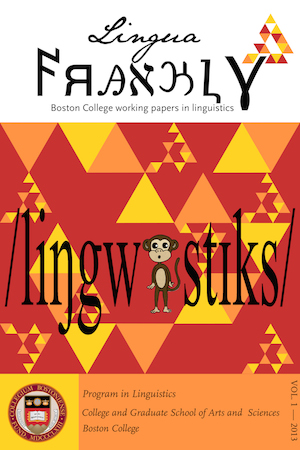Translating Magic: balancing art and science in the translation of Harry Potter
DOI:
https://doi.org/10.6017/lf.v1i1.5663Abstract
Literature is rightfully regarded as an art, but when translation enters the fray, it can require a somewhat scientific approach. Throw in a little bit of “Harry Potter” magic, and it can really become tricky. Translation is challenging, as it requires us to look not only at problems such as equivalence and the use of names, but also culture itself. Linguistic factors are also an issue, as a certain type of word might be abundant in the source language, but not very common in the target language. The role of the translator is therefore to distinguish what in a text is potentially translatable from what is fundamentally not. From there, one must walk the thin line between the art of translation – our personal hunches – and the science of translation – which is often too literal. In the case of J.K. Rowling, author of the Harry Potter book series, another difficulty arises. She has revealed herself as a wordsmith, not only with her writing skills, but also through her ability to coin and construct original words. Whether using terms from ancient mythologies, extinct languages or everyday life, her writing is known for an abundance of puns, linguistic jokes and other allusions that are mixed to create a brand new lexicon. Some examples include Harry Potter’s school, Hogwarts, the magical sport, Quidditch, as well as an array of supernatural creatures such as Thestrals and Jobberknolls. This may be the reason why her books have caught the interest of the linguistics and translation studies communities; their richness and diversity make the possibilities nearly endless. Each name or word created comes with a baggage of undertones and veiled references that translators must track and recognize before they attempt to translate them. As an additional complication, the Harry Potter books were first thought to be children’s literature, and only later attracted an older audience more prone to read between the lines and detect the hidden meanings of words. As a result, the series is known for its ambivalence, since children and adults alike can enjoy it for different reasons. Keeping these facts in mind, this research aims at using today’s linguistic theories and looking at word creation in both English and French in order to establish patterns of translation, and suggest possible equivalents for some of J. K. Rowling’s inventions.
References
Works Cited
Primary Sources
Rowling, J.K. (1998). Harry Potter and the sorcerer’s stone. Pittsburg:
Scholastic, Arthur A. Levine Books.
---. Harry Potter à l'école des sorciers. (1998). Trans. Jean-François Ménard.
Paris: Gallimard.
---. Harry Potter and the goblet of fire. (2000). Pittsburg: Scholastic, Arthur
A. Levine Books.
---. Harry Potter et la coupe de feu. (2000). Trans. Jean-François Ménard.
Paris: Gallimard.
---. Fantastic beasts and where to find them. (2001). Pittsburg: Scholastic,
Arthur A. Levine Book.
---. Harry Potter and the deathly hallows. (2007). Pittsburg: Scholastic,
Arthur A. Levine Books.
---. Harry Potter et les reliques de la mort. (2007). Trans. Jean-François
Ménard. Paris: Gallimard.
Secondary Sources
Arnaud, Pierre J.L. (2003). Les composés timbre-poste. Lyon :
Presses
Universitaires.
Croft, William and D. Alan Cruse. (2004). Cognitive linguistics. Cambridge:
Cambridge University Press.
Hughes, Geoffrey. (1939). A history of English words. Oxford and Malden:
Blackwell Publishers.
Langacker, Ronald W. (1987). Foundations of cognitive grammar, vol. I:
theoretical prerequisites. Stanford, CA: Stanford University Press.
Plag, Ingo. (2003). Word-formation in English. Cambridge:
Cambridge
University Press.
Strang, Barbara M.H. (1970). A history of English. London: Methuen & Co
Ltd.
Taylor, John R. (2002). Cognitive grammar. Oxford: Oxford University
Press.
Dictionaries
Larousse / Chambers. Paris. Larousse /HER, 1999.
Oxford advanced learner’s dictionary. Oxford University Press, 1948. Petit Larousse illustré, le. Paris: Larousse, 1905.
Websites
Harry Potter lexicon, the. 2000.
Downloads
Published
How to Cite
Issue
Section
License
Copyright (c) 2015 Lingua Frankly

This work is licensed under a Creative Commons Attribution-NonCommercial 4.0 International License.


